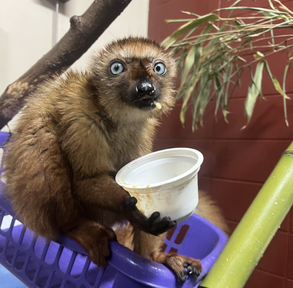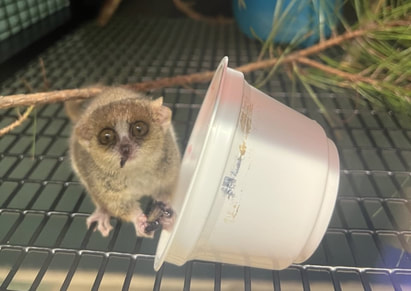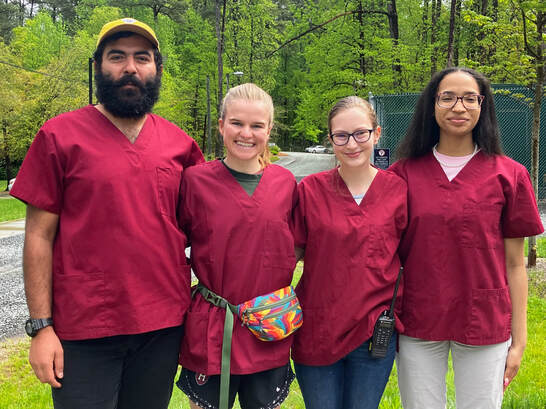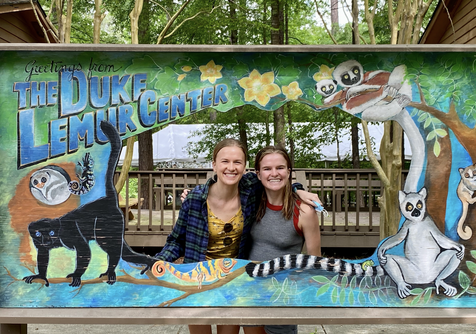|
Where is the largest community of lemurs outside of Madagascar? Durham, North Carolina. As a Durham resident studying plant-lemur interactions, this surprising fact is exceptionally convenient (although hardly coincidental, as opportunities for lemur research were a motivating factor for my move to NC). Nestled in the Duke Forest, The Duke Lemur Center (DLC) is home to over 200 lemurs across 13 species. With a mission to "advance science, scholarship, and biological conservation through non-invasive research, community-based conservation, and public outreach and education", the DLC immediately captured my fascination. As a PhD student with a background in field biology in Madagascar, I first became involved with the DLC's SAVA conservation program. DLC SAVA is the branch of the DLC that is based in Madagascar and focuses on biodiversity conservation. I work with DLC SAVA staff and many local collaborators to study wild lemurs, plants, and their interactions in northeast Madagascar (see previous blog posts for more details). While I love field research, logistical challenges and cryptic, unhabituated (wild, not familiar with human presence) lemurs pose limitations to the experimental design needed for the seed dispersal questions that I am keen to ask. For example, I am interested in how both plant and lemur characteristics influence the likelihood of lemur-dispersed seeds resulting in new plant recruits. Is is possible that not only species differences, but also individual traits (sex, age, weight) affect seed dispersal. But these questions remain unanswered, partly because these traits are difficult and resource-intensive to characterize in wild lemur seed dispersers. Luckily, the DLC presents a unique opportunity to study seed dispersal in a controlled environment where I have access to data on individual lemur traits. After developing an experiment to assess the drivers of seed dispersal outcomes, acquiring necessary permits and approvals, and connecting with several brilliant undergraduate research assistants, I dove head-first into my first experience with captive animal research. I was lucky that three skilled undergraduates joined the seed dispersal team: Allie Monahan from NC State, Borna Zareiesfandabadi from UNC Chapel Hill, and Dedriek Whitaker from Duke. Together, we fed lemurs seeds from common agricultural plants (kiwis, dragonfruit, melon, etc.... a tasty treat!) and observed the lemurs until they gifted us with their poop samples. My team and I spent hours diligently sorting through the samples to extract and measure seeds. It's a good thing that we aren't squeamish! Each lemur-passed seed was placed in a Petri dish under different experimental treatments. We then monitored seeds to identify if and when each individual germinated. In total, we collected and measured over 6,000 seeds dispersed by eight lemur species. Importantly, we know which lemur individual dispersed each seed, enabling us to ask questions about how individual traits affect seed dispersal outcomes. Collecting such a wealth of detailed data would not have been possible without the hard work, creativity, and passion of Allie, Borna, and Dedriek. Captive animal studies come with their own limitations. For example, the Malagasy plant species that lemurs typically consume in the wild are not available for use in captive animal studies in Durham. There are therefore tradeoffs between experimental control and ecological relevancy. To address this challenge, we hope to compare data from the DLC to data to a parallel field study with wild lemurs in Madagascar. Stay tuned for forthcoming results!
0 Comments
Leave a Reply. |
|



